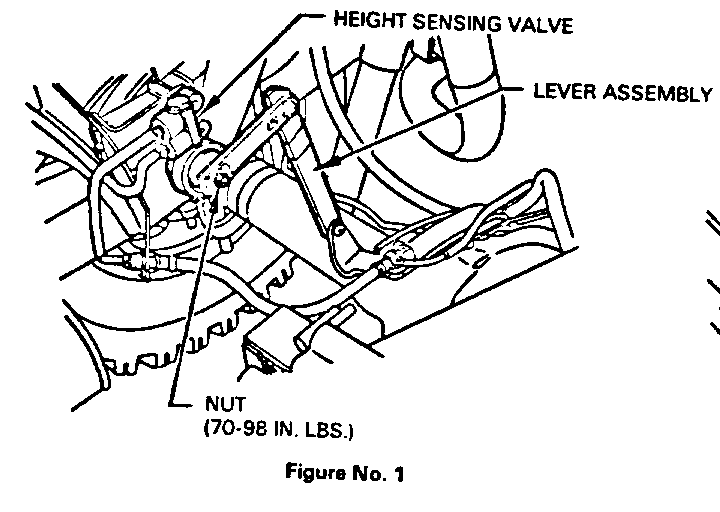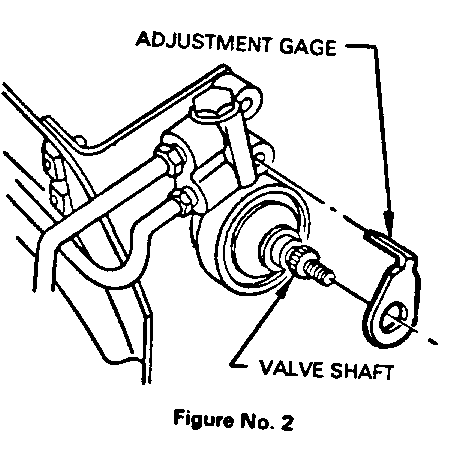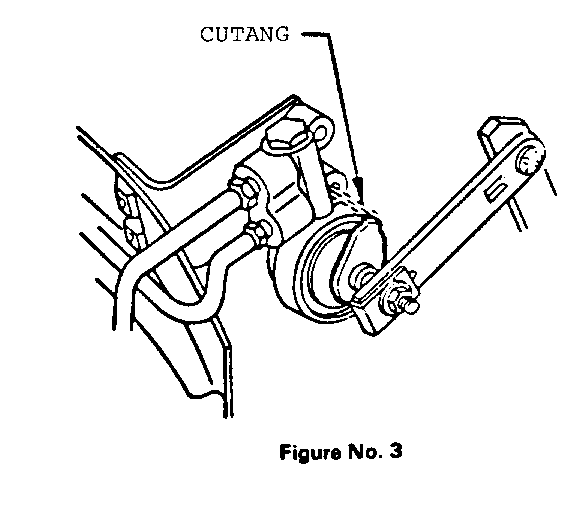HEIGHT SENSING BRAKE PROPORTIONING VALVE SETTING

Model and Year 1984 "C-K-G" 20-30 SERIES TRUCKS
This bulletin is being published to provide the proper procedure to be followed in setting the height sensing brake proportioning valve on applicable vehicles.
This procedure must be followed whenever an existing valve and/or the linkage is disassembled or removed to insure proper valve operation.
1. Raise vehicle, axle must be allowed to hang free (no load condition).
2. Remove nut and disengage lever assembly from valve shaft (Figure #1).
3. Select appropriate plastic adjustment gage shown in chart below that is available from WDDGM:
ADJUSTMENT GAGE USAGE
P/N Code Color Vehicle Combination --- ---- ----- ------------------- 14061394 A Green "C/K" 30 With G52
14061395 B Black C30 Less G52 C20 All K20903 G31305/06 With LE3/LS9
14061396 C Blue K30 Less G52 K20906 G31305/06 With LL4/LT9
(RPO G52: Extra Capacity Rear Spring)
4. Rotate valve shaft to permit installation of plastic adjustment gage. Center "D" shaped hole of gage must seat over "D" shape of the valve shaft and gage tang must be positioned in valve mounting hole (Figure #2).
5. Reinstall lever assembly to the valve shaft utilizing a "C" clamp or channel lock pliers to seat lever nylon bushing to serrations on the valve shaft.
NOTICE: DO NOT DRIVE THE LEVER ONTO THE SHAFT USING ATTACHING NUT. DOING SO MAY RESULT IN IMPROPER VALVE SETTING.
6. Reinstall valve shaft nut and torque to 8-11 N.m (70-98 in. lbs.).
7. Cut gage tang from body of the adjustment gage to allow the valve assembly to rotate freely (Figure #3).
8. Lower vehicle and test brakes.



General Motors bulletins are intended for use by professional technicians, not a "do-it-yourselfer". They are written to inform those technicians of conditions that may occur on some vehicles, or to provide information that could assist in the proper service of a vehicle. Properly trained technicians have the equipment, tools, safety instructions and know-how to do a job properly and safely. If a condition is described, do not assume that the bulletin applies to your vehicle, or that your vehicle will have that condition. See a General Motors dealer servicing your brand of General Motors vehicle for information on whether your vehicle may benefit from the information.
